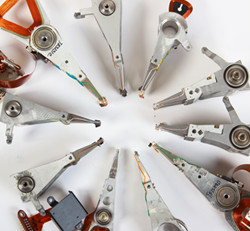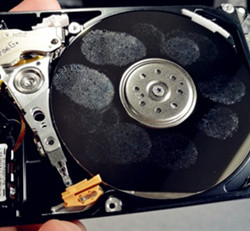There're mainly four chips on a hard drive's PCB and this article will give you an general idea of where they are and what they do.
The first chip: The heart chip of one PCB
The heart of PCB is the biggest chip in the middle called Micro Controller Unit or MCU. On modern HDDs MCU usually consists of Central Processor Unit or CPU which makes all calculations and Read/Write channel - special unit which converts analog signals from heads into digital information during read process and encodes digital information into analog signals when drive needs to write. MCU also has IO ports to control everything on PCB and transmit data through SATA interface.
Chip 2: The Memory Chip
The Memory chip is DDR SDRAM memory type chip. Size of the memory defines size of the cache of HDD. Usually you find the size of memory in datasheet of the HDD, theoretically it means HDD has that size of cache but it's not quite true. Because memory logically divided on buffer or cache memory and firmware memory. CPU eats some memory to store some firmware modules and as far as we know only Hitachi/IBM drives show real cache size in data sheets for the other drives you can just guess how big is the real cache size.
Chip 3: VCM(Voice Coil Motor controller) controller chip
This chip is the most power consumption chip on PCB. It controls spindle motor rotation and heads movements. The core of VCM controller can stand working temperature of 100C/212F.
Chip 4: Flash ROM Chip
Flash ROM chip stores part of the drive's firmware. When you apply power on a drive, MCU chip reads content of the flash chip into the memory and starts the code. Without such code the drive wouldn't even spin up. Sometimes there is no flash chip on PCB that means content of the flash located inside MCU.
A million thanks to Data Recovery Salon for sharing such an excellent platform for sharing data recovery knowledge here. I will support you by sharing more of mine.
Subscribe to:
Post Comments (Atom)









No comments:
Post a Comment